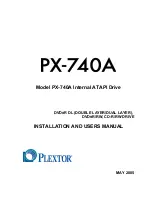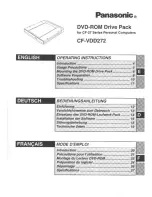
FBVi-2U4-4T |
BACnet Networking
©ABB 2021 All Rights Reserved.
Subject to change without notice
WWW.CYLON.COM
18
M
AN
01
48
re
v 5
BACNET IP
BACnet/IP uses the User Datagram Protocol (UDP) to send data packets. ASHRAE adopted BACnet/IP
annex j of the 135- 1995 standard
BACnet/IP communicates using four methods.
•
BACnet/IP to BACnet/IP (same subnet): Assuming that two devices know each other's IP
addresses and the UDP ports they are using, i.e., their respective B/IP addresses, there is nothing
that restricts them from communicating directly.
•
BACnet/IP to BACnet/IP (different subnet): The location of the two devices is already known by
the host and the message is routed to the device using switches and routers.
•
Broadcast (same subnet): This is a standard Who is/ I am message sent across a local subnet for
the BBMD to discover what the address are for the BACnet devices on the subnet.
•
Broadcast (different subnet): This is a standard Who is/ I am message sent across a local subnet
for the BBMD to discover what the address are for the BACnet devices on other subnets.
BACNET IP BROADCAST MANAGEMENT DEVICE (BBMD)
Some
BACnet
services use “broadcasts” (e.g. “
Who-Is
”). On a
LAN
with standard routers, these
broadcasts are “blocked”. Thus,
BACnet
broadcasts are limited to the
IP Subnet
of the
BACnet
device.
With a
BACnet/IP
network of 2 or more
IP
subnets, a device with
BBMD
can be used.
A
BBMD
located on an
IP
subnet monitors the origin of a broadcast message on that subnet and, in turn,
constructs a “peer to peer”
message
in order to pass through an
IP router
. This “peer to peer” message is
received by other
BBMD
s on other
IP subnet
s and transmitted as a broadcast on their attached
subnet
s.
Since the
BBMD
messages are directed messages, individual messages must be sent to each
BBMD
. Each
BBMD
device maintains a
Broadcast Distribution Table (BDT)
, the content of which is usually the same for
all
BBMD
s within the network.
BBMD
s must know the
IP address
of all other
BBMD
s in the network.
It is possible to communicate to a device on a subnet that does not have a
BBMD
as in the
BACnet
Workstation
example above. This type of device is called a
foreign device
since it resides on a different IP
subnet from devices attempting to communicate with it.
Usually, in
BACnet/IP,
a
foreign device
is on a different
subnet
.
The foreign device (e.g.
BOWS
) registers with each
BBMD
, after which it can communicate with all other
devices on the network. The
BBMD
then maintain a
Foreign Device Table (FDT)
which keeps track of
foreign device
s.
Содержание FBVi-2U4-4T
Страница 1: ... USER GUIDE MAN0148 rev 5 FBVi 2U4 4T ...
















































